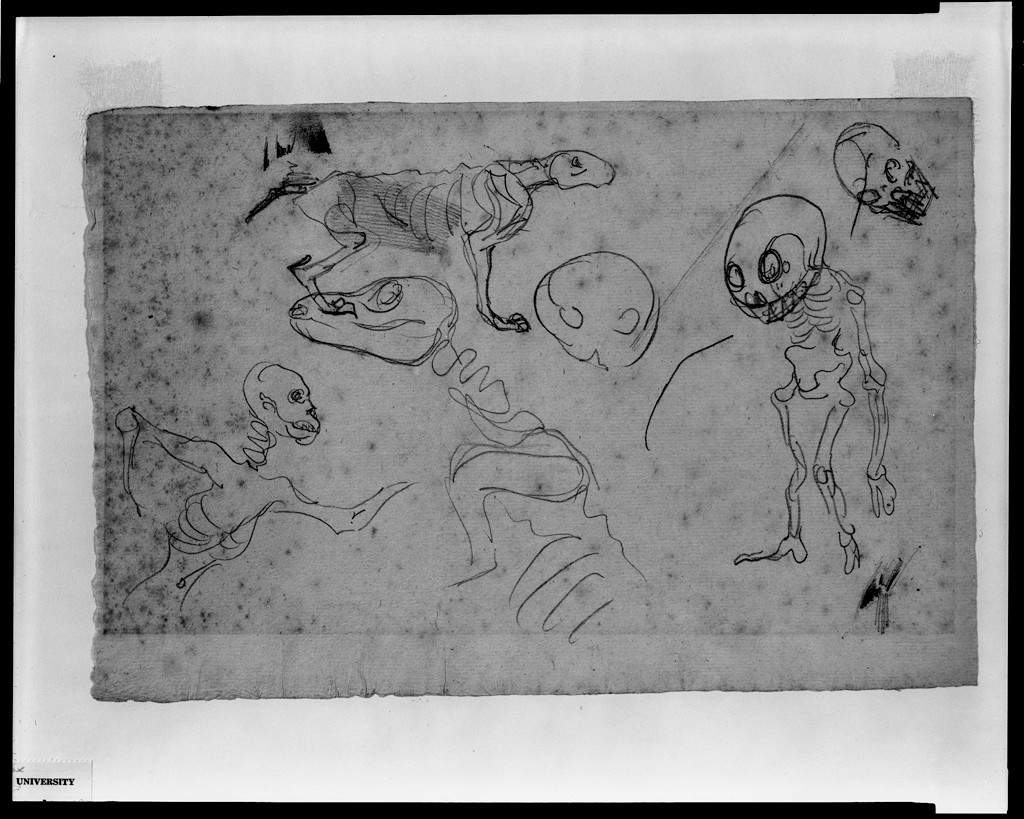1816-1817: Georges Cuvier’s The Animal Kingdom published [37]

Art Piece: Sketches of Skeletons: An Animal and Hunchback, Ferdinand-Victor-Eugène Delacroix, c. 1829-1830 [57]
Paper: Evolution of the vertebrate skeleton: morphology, embryology, and development [72]
Cuvier was a French zoologist whose work in comparative anatomy significantly furthered our understanding of how important organism morphology and structure are. Notably, Cuvier argued that [63] “anatomical characteristics distinguishing groups of animals are evidence that species have not changed since the Creation. Each species is so well coordinated, functionally and structurally, that it could not survive significant change.” Notably, Cuvier’s debate regarding ibises with fellow intellectual Lamarck more concretely established the relevance of Cuvier’s thoughts and also showed that the appearance and morphology of the ibis was conserved over time — Cuvier compared an ancient, mummified ibis with that of one from his time, and found that the two birds were extremely, extremely alike. This rebuked [36] Lamarck’s ideas, since Lamarck argued in favor of a “slow transmutation of animal species over time,” while Cuvier’s findings with the ibises instead showed that the species instead seemed “fixed.” This was a significant paradigm shift, as Cuvier’s findings and ideas (further enumerated upon in his published text) showed a departure from the popular Lamarckian view of the natural world that many possessed at that time. The artwork above [57], which features sketches of skeletons, is relevant to Cuvier and his work, since his work in comparative anatomy helped elucidate some of the holes in Lamarck’s theory. Moreover, the scientific paper above [72] also shows an expansion on Cuvier’s ideas and work — the paper discusses the evolution of the vertebrate skeleton, which is a comprehensive view that Cuvier would most likely have been very interested in himself.